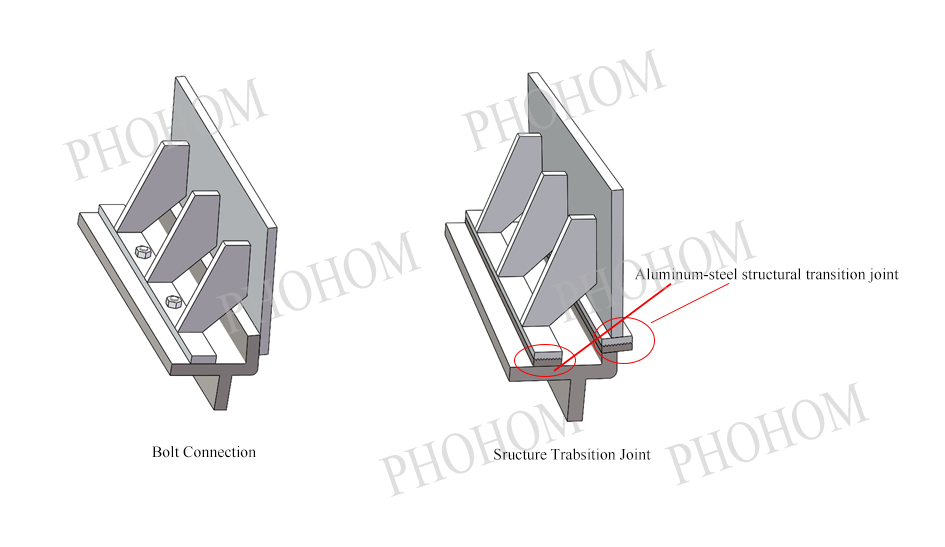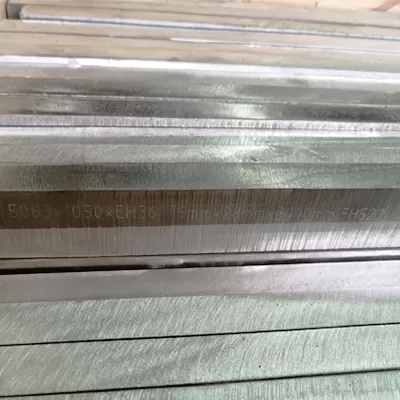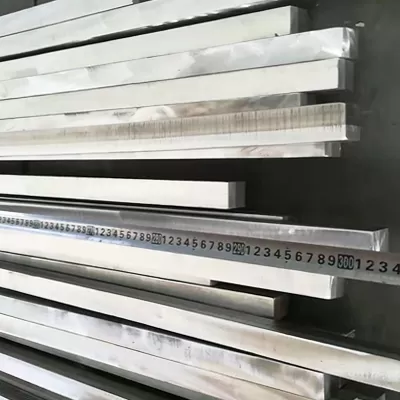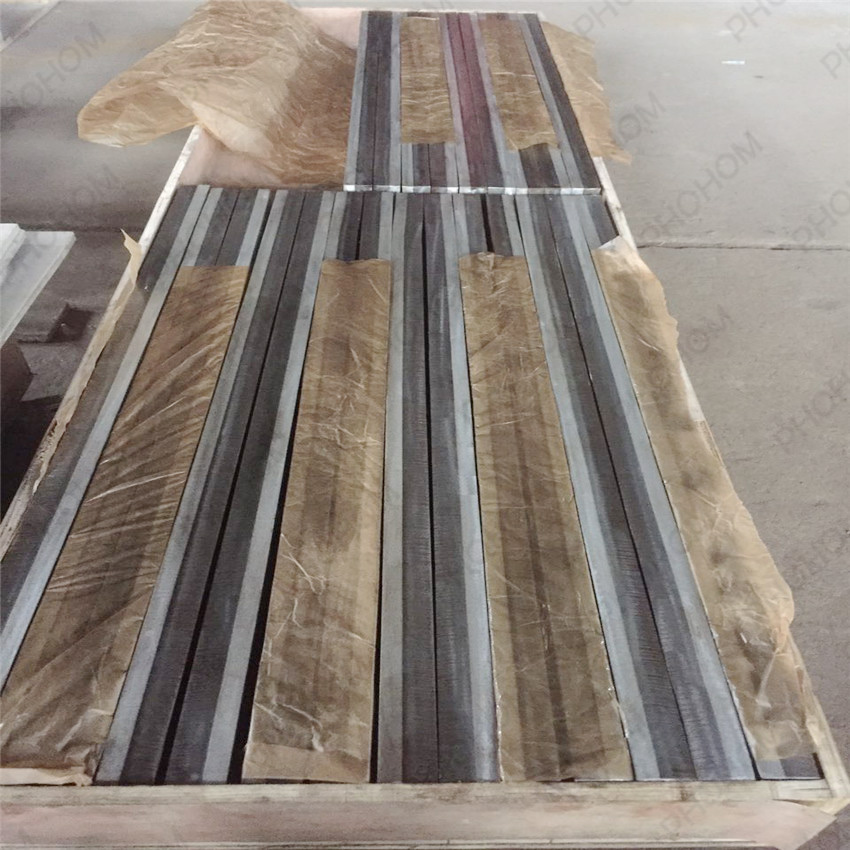Phohom's explosion-bonded Alu Steel Transition Joint enables reliable steel-aluminum welding, ensuring structural continuity and strength for shipbuilding.
- Description
Aluminum alloy boasts an array of outstanding properties, including low density, excellent corrosion and wear resistance, high specific strength and stiffness, superior impact resistance, easy surface treatment capabilities, as well as good processability and formability. With the global trend towards lightweighting in ship structures gaining momentum, the utilization of aluminum-steel structural transition joints in both shipbuilding and ship maintenance has become increasingly profound and widespread.
The significant differences in thermophysical properties between steel and aluminum pose a considerable challenge when attempting to weld them directly. Our "aluminum alloy-pure aluminum-steel" transition joint, crafted through the innovative explosion bonding process, offers an effective solution. This transition joint enables the seamless welding of steel and aluminum structures without the need for direct contact welding between the steel hull structure and the aluminum alloy hull structure.
By employing our explosion-bonded transition joint, shipbuilders and maintenance teams can achieve structural continuity, airtightness, and meet the necessary strength requirements with ease. Moreover, this approach ensures reliable welding quality and demands relatively low operating skills, making it an ideal choice for a wide range of marine applications.

| Products | Interlayer | Pull-of strength | Shear strength | Maximum welding temperature | |
| Aluminum Steel Structural Transition Joint | Aluminum | ≥80MPa | ≥60MPa | 300℃ | |
| Aluminum-Titanium-Steel Structural Transition Joint | Titanium | ≥137MPa | Al-Ti | ≥80MPa | 450℃ |
| Ti-St | ≥137MPa | ||||


